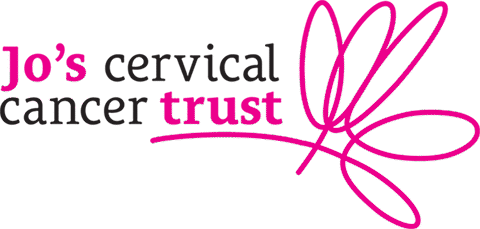Why cell changes?
Last modified: 11 June 2025, 13:28
This week is Cervical Screening Awareness Week and we’re talking about cell changes.
Why are we talking about cell changes?
Because every day at Jo’s Cervical Cancer Trust we hear from women who are scared and confused after getting the results of their cervical screening or who are attending colposcopy.
Falling between the gap of cervical screening and cervical cancer, the needs of women with cell changes can sometimes be overlooked.
Cell changes can go by many names. Abnormal cells. Cervical abnormalities. Dyskariosis. CIN. GGIN. Add words such as HPV and LLETZ: is it any wonder some women are unsure what it all actually means?!
At Jo’s we have moved to talking about cell changes. We feel that there is already so much worry and stigma surrounding HPV and cervical health that we don’t want to add to it with people thinking they are not ‘normal’. This move is also backed by women who have been personally affected, who prefer this term too. Cell changes are relatively common; in fact, 220,000 women will have them each year. So it’s not abnormal at all. If needed, treatment is given to prevent cell changes from developing into cervical cancer, with a high success rate of about 90%. However, despite many women being affected, there are big gaps in the information and support they receive.
Not so simple?
Our new report ‘Not so simple. The impact of cell changes and treatment’ highlights the experience of some of these women and highlights opportunities to improve the care that is offered.
We are absolutely not trying to dissuade women from attending cervical screening or recommended treatment. We know treatment for cell changes is highly effective at preventing the development of cervical cancer – the impact of which can be truly devastating. But based on our new research we are saying that more must be done to ensure those women diagnosed with cell changes are properly supported before, during and after treatment.
The calls and queries we get at Jo’s are wide-ranging. Some of this stems from results letters, where words such as ‘dyskariosis’, ‘severe’ and ‘stage 3’ cause alarm. There is also a level of confusion around HPV. Many women contact us after treatment, asking things such as when they can swim again, is it safe to have sex, or how long they should expect their bleeding to last. Others are terrified they have cancer, will have cancer or will experience things such as a miscarriage.
20% of the women we spoke to said they were unaware of the side effects of treatment. Not being aware of side effects means women are more likely to feel scared and concerned if they do experience them. It also means they won’t know where they can access support or medical intervention if needed, or even whether they will be taken seriously if they do ask for it.
Charlotte Brooke was diagnosed with cell changes in 2018 when she was 25: “I didn’t really understand what my results letter meant – all I saw was ‘stage 3’ and lots of medical terms, so I immediately thought I was going to get cancer. At my first appointment my doctor told me I was ‘one step away from cancer’ and also that I might not be able to have kids, which was awful to hear and I wasn’t quite sure how to process everything. It would have devastated me if I couldn’t have kids. I’m glad I had treatment but it was a really scary time, especially as I had very heavy bleeding afterwards which I was not expecting at all.”
As with all surgical procedures, there is a risk of side effects. Thankfully, most are manageable and disappear within the expected time frame. However, we found some women are affected for long periods post-treatment, especially those living in fear of miscarriage, worried about their cancer risk or with anxiety.
Those working in colposcopy, and indeed in other health fields where women who have had treatment may visit, are resource-stretched. However, there is a real opportunity to assess the pathways and information given to women and identify where improvements can be made. Simply asking if they understand what is happening takes a few seconds but could make all of the difference later down the line.
Lisa was diagnosed with cell changes in 2018 when she was 45: “I totally freaked out when I got my results letter as I didn’t understand what it said. I had so many questions – I’ve been with the same partner for 20+ years, how could I have HPV?! Right up until I had the LLETZ procedure, there was no mention of cancer or what the treatment was really for. I don’t feel that the information I was given was clear or easy to understand – I just remember being frightened.”
For more information about Cervical Screening Awareness Week: www.www.jostrust.org.uk/csaw
Further questions?
Our support services are here for you. Get support, answers to your questions and more information at https://www.www.jostrust.org.uk/support
Categories: cell changes cervical screening
